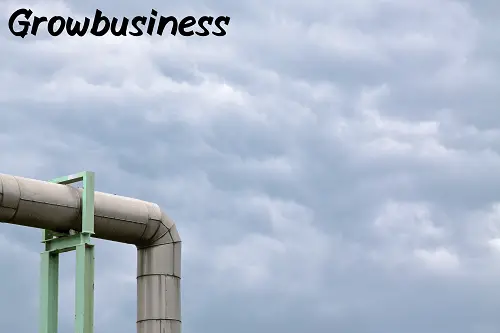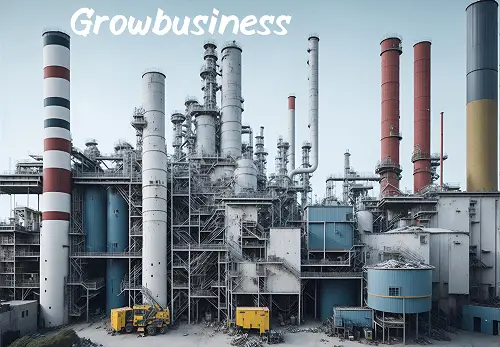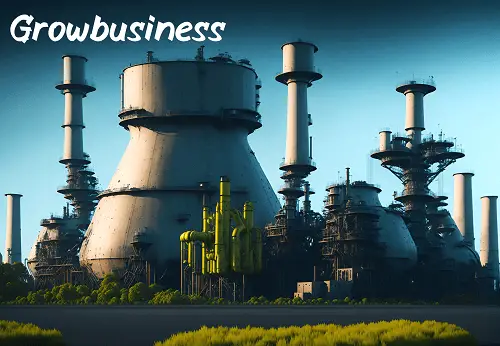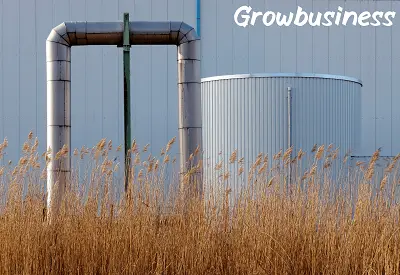The Business and Industrial Transition District:
Business Strategic Approach to Urban and Economic Revitalization With accelerating technological change, economic restructuring, and growing concerns about sustainability, cities and regions must learn new ways to manage changing industry realities. One innovative response is industrial and commercial transition areas. Industrial and commercial transition areas are geographic areas where former industrial activities are relocated, modernized,d or transformed to serve new commercial and community purposes. Industrial and commercial transition areas can be used as a suitable framework for economic revitalization. Distressed areas can foster the development of new industries within the framework of sustainable development practices. Below is an outline of what industrial and commercial transition areas are.

why they matter, and how they work in practice:
By definition, a space is meant to be a Business and Industrial Transition District. In fact, is a transition district zoned into the urban or industrial area. It often can be seen as areas once used industrially which, consequently become economic declines due to their involved industries as they being a manufacturing, mining. Heavy industry, or obsolete sectors of that particular economy. Or perhaps just an economic decline in general. The primary mandate for BITDs would be the retirement of dirty, old, or antiquated industries into cleaner, newer ones and activities.
Challenges BITDs will face:
- Environmental Remediation: Decontamination of environmental harm caused by past industrial actions
- Zoning and Land Use Changes: Update the zoning law and land use to enable mixed-use developments- residential-commercial and tech-based industries.
- Economic Diversification: This promotes innovation capability in emerging industries, for instance, the fast growth of green energy. Advanced manufacturing technology, or artistic endeavors industry.
- Infrastructure: This facilitates a business climate through transportation utilities and broadband connectivity for district expansion. That is to say that any community local or business requirements to further the economic development. Targeted towards the sustainability of that environment within districts become addressed.
Business and Industrial Transition Districts End:
Today with the changing economic conditions, the requirement of industrial transition has assumed a new sense of urgency in every nook and corner of the world. Most of the manufacturing and heavy industries today are battered by globalization, technological improvement, and environmental legislation in many ways. Once upon a time giant revenue earners like the coal mining industry or producing steel now struggle because of such decreased demand and a turn towards clean energy and machinery.
Transition districts at the business and industrial levels can offer a more formalized approach to this change with an offer to:
- Economic Revitalization: Transformation districts help revitalize new economic centers in suffering areas from unemployment or economic depression because old industries are declining. Emerging industries, such as green energy, high-tech sectors, or logistics, may strengthen the new jobs and the local economy.
- Green city: BITDs will have green building codes, renewable energy infrastructure, and Smart City technologies that do not cause ecological harm or new development.
- Community Engagement: The transition districts allow space for community engagement in the course of the whole development process. This will ensure that local residents benefit positively from the whole development process. For example, new houses, the quality of public amenities, and the social infrastructures.
The two incentives include zoning changes to try to attract new business into transition districts or investment in the same. Tax abatements may include, in this context, a clean technologies investment or a tax incentive given to real estate developers for creating sustainable housing and/or commercial development.
Environmental Clean Up:

Often, aging industrial sites are either polluting bringing dirtiness or degradation from the environment. Transition districts usually include a program of environmental clean-up that involves the eradication of hazardous waste, along with the decontamination of the soil, coupled with the redevelopment of brownfields to become clean land.
- Support to Emerging Industries: BITDs support emerging industries, including tech start-ups, renewable energy firms, and creative industries. They provide much-needed infrastructure, business networks, and workforce development opportunities that transition districts can support in the innovation process and attract new businesses.
- Mixed-Use Development: This is another characteristic that combines living, working, and recreational space under one roof. This leads to more vibrant communities, minimal time spent traveling, and maximum use of infrastructure.
Public-Private Partnerships:
BITDs depend on the nature of the partnership that will be from the local government with the private developers and community stakeholders. It is this that brings into the aspect of resource pooling, sharing experience, and a comprehensive redevelopment plan.
Examples of Successful Business and Industrial Transition Districts:
An example of an industrial and commercial transition area is the Brooklyn Navy Yard. In the mid-19th and mid-20th centuries, it became one of the world’s largest shipbuilding centers. However, after World War II, it remained virtually dormant for many decades. Today, it is an industrial and technology campus that brings together more than 400 companies involved in advanced manufacturing, tech startups, green building, and other activities. Available land is close to Manhattan, and the sustainable development approach allows for renewable energy, less waste, and recycling for the shipyard.
Business and Industrial Transition District FAQ:
1. What are some of the benefits of having a Business and Industrial Transition District?
A BITD can be a way of rejuvenating decaying industrial neighborhoods through new ventures, infrastructural upgrading, jobs, and environmental renewal. A BITD can thus be an opportunity to realign with the new economics but also opens opportunities for the grass-root levels of persons there.
2. Who gets the spoils in a BITD?
A BITD also benefits other stakeholders. Locally, the area will be wealthier due to the additional revenues accruing from the taxes paid during its lifetime while businesses are eased through incentives and services motivating them toward growth; new employment, houses, and infrastructural facilities are also accrued to local communities.
3. What are the mainly promoted industries in a BITD?
The main support is for renewable energy and clean technology, advanced manufacturing industries, and the creative sector. Such an industry promotes diversification toward sustainable innovations.
4. What does BITD do for the environment?
BITDs contribute toward environmental remediation and sustainability through the cleanup of polluted industrial sites, promotion of sustainable building practices, and support of green industries.
5. What is the role of local governments in BITDs?
One must admire the provision that the local governments provide when it comes to changing zonings, offering incentives, and public-private partnerships. It is much more pertinent in that whatever is applied ought to be consonant with the general aims of the community’s development and preservation environment.
Conclusion:

Industrial and commercial transition areas represent a revolutionary approach to urban renewal. Industrial and commercial transition areas represent strategic changes to former industrial spaces that lead to sustainable, vibrant,t and prosperous communities characterized by inclusive economic growth, environmental protection, and social justice. Cities around the world are still rebuilding themselves according to new paradigms of global industry; this may be one of the keys to changing the positive landscape worldwide.
